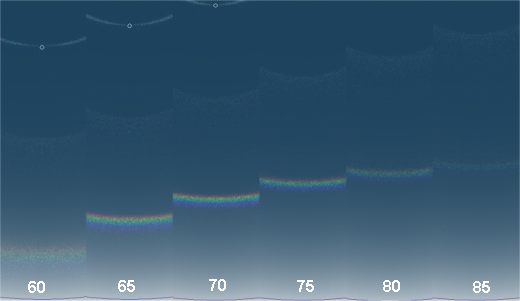|
|
|

|
Each slice is for a different solar altitude and shows the sky from the horizon up to about 70 degrees.
The sun shows as a small circle in the first three slices.
The solar altitude in degrees is along the bottom.
|
|
|
|
|
|

|
Each slice is for a different solar altitude and shows the sky from the horizon up to about 70 degrees.
The sun shows as a small circle in the first three slices.
The solar altitude in degrees is along the bottom.
|
|
|